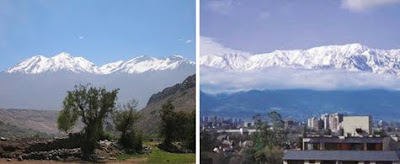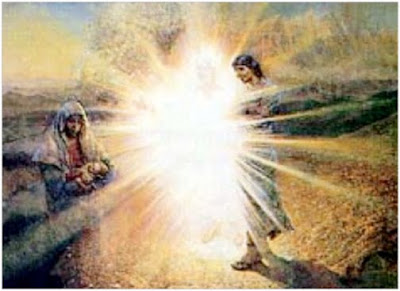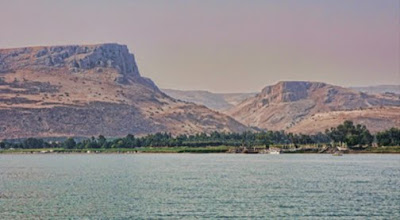 Obviously, there were other lands within the Land of Nephi, which stretched from the east sea to the west sea (Alma 22:27) and from the Land of Zarahemla on the north to the Lehi landing site along the west sea in the south (Alma 22:28,33). The entire Land of Nephi was surrounded by water, as was the Land of Zarahemla to the north, except for a small neck of land between the land and the Land of Desolation to the north of Bountiful (Alma 22:31).
Obviously, there were other lands within the Land of Nephi, which stretched from the east sea to the west sea (Alma 22:27) and from the Land of Zarahemla on the north to the Lehi landing site along the west sea in the south (Alma 22:28,33). The entire Land of Nephi was surrounded by water, as was the Land of Zarahemla to the north, except for a small neck of land between the land and the Land of Desolation to the north of Bountiful (Alma 22:31).The many cities within the Land of Nephi were built by the Nephites in their nearly 400 years occupying these lands. Somewhere around 200 B.C., Mosiah was warned of the Lord to flee out of the Land of Nephi “and as many as would hearken unto the voice of the Lord should also depart out of the land with him, into the wilderness” (Omni 1:12).
We are not told what percentage of the Nephites in the Land of Nephi went with Mosiah, and what percentage remained behind. We do know that those left behind were quite wicked for the Lord to warn Mosiah to flee from among them. Thus, the Land of Nephi was left in the hands of wicked Nephites, and soon the Lamanites overran that land and either subjugated the remaining wicked Nephites, absorbed them into their Lamanite culture, or killed them.
By the time of Benjamin, Mosiah’s son, the Lamanites who then occupied the Land of Nephi, evidenty had come down to battle with the Nephites in Zarahemla and conquered some of that Land, for king Benjamin and the Nephites of Zarahemla did eventually “contend against the Lamanites until they had driven them out of all the lands of their inheritance” (Words of Mormon 1:14).
Now there was a wilderness that divided the Land of Nephi from the Land of Zarahemla (Alma 27:14), which was a narrow strip of land (Alma 22:27) that ran from the east sea clear to the west sea (Alma 22:27), with the Land of Nephi to the south running from the sea east to the sea west (Alma 22:27), and the Land of Zarahemla on the north of this wilderness (Alma 22:27). Now this narrow strip of wilderness could not have been too narrow, for Ammon led the Anti-Nephi-Lehies not only into this wilderness, but that they traveled a ways within the wilderness and “came over to the borders of the land” of Zarahemla where they stopped and waited while Ammon traveled “forth into the land of Zarahemla” (Alma 27:15).
Within the Land of Nephi there was a Land of Jerusalem (Alma 21:1) on the borders of the Land of Mormon where the Amalekites and Amulonites (Nephite outcasts who had joined with the Lamanites) built a great city which was called Jerusalem (Alma 21:2), so named after the Jerusalem in Palestine (Alma 21:1), which was near the borders of the Land of Mormon.
This city of Jerusalem is the only city within the Land of Nephi that is described as a “great city” other than the City of Nephi where Nephi built a temple and taught his people to build buildings of wood, iron and steel. Since this city was built after the Nephites left the Land of Nephi, yet was built by Nephite outcasts, the city might be identifiable today, though it would only be a guess—yet its size would tend to preclude most other sites. The only obstacle to identification is that the location of the Land of Jersualem is not spelled out in the record. We do not know, for instance, whether this land was in the west or the east or the south. Thus any identification must be made by other means.
(See the next post, “Cities of the Land of Nephi – Part III,” where the City of Jerusalem in the Land of Nephi was located)































